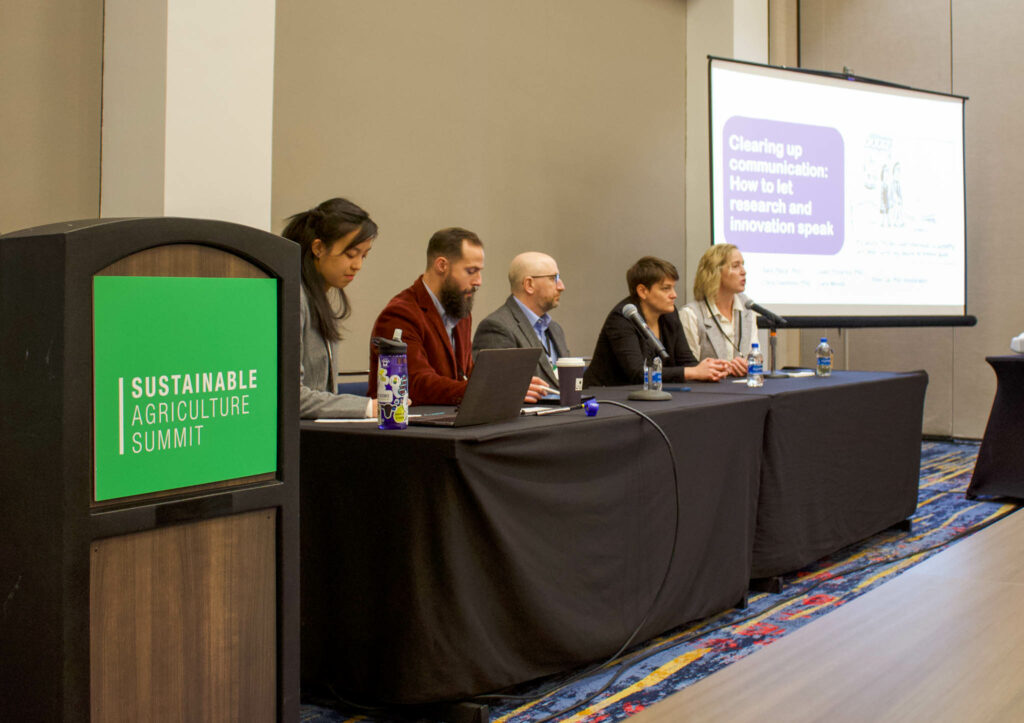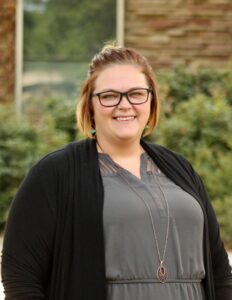Communicating about sustainability in animal agriculture can be a unique space to navigate as we seek to better understand how to address the biggest challenge of our time. The compounding pressure of consumer and policy expectations, the lingering fear of imposed regulations without proper and full understanding of unintended consequences and the constant shift in the climate and regional weather patterns. This space moves quickly and swiftly, and it is not unusual that the most pressing issues of today soon become the solutions and innovation that we needed yesterday. We need to learn how to reduce emissions, maintain human health and nutrition, respond in the face of major shifts in weather patterns while also producing more food to feed a growing population. Many sustainability professionals gathered last week at the Sustainable Agriculture Summit to explore and discuss this critical space in Charlotte, North Carolina.
AgNext’s Feedlot Systems Specialist and Associate Professor at Colorado State University, Dr. Sara Place, served on several panels during the event specifically using her lens and expertise of the U.S. beef industry to help shape the understanding of beef sustainability for sustainability professionals from across the food industry and agriculture industry. Place’s position in the livestock sector helps offer a unique perspective when speaking on how to communicate clearly about the results of scientific research. Place was joined on the panel by colleagues from all parts of the beef supply chain including feed industry, dairy industry, and environmental NGO.

Place shared her own research on enteric methane in cattle systems as an example, “Enteric methane is an opportunity and a challenge. If we can decrease emissions significantly where we can, we aren’t contributing to further warming.” Place described that many times people will only hear a portion of what she’s trying to communicate. She goes on to say, “So, you mean we don’t have to do anything? No – That’s what not I said. I said that we have a responsibility to continue working to reduce our contribution to emissions so we aren’t contributing to further warming where we can.”
Place also described the importance of connecting directly with a specific and targeted audience and determining the best course of delivery. Place suggests that, “It’s critical to find the right audience for the results you are sharing with and what ways you are communicating that science.” For example, the AgNext podcast serves as a great tool for listeners who like long-form audio and podcasts, but Place also recognizes that her most engaging posts on X (formally Twitter) tend to resonate most when they include a graph, image, and a short headline. Place often uses X as a platform to communicate scientific findings and has caught the attention of over 11,000 followers. Place suggests “If you target the right audience and match that content in their preferred way, it can help communicate science more efficiently.” You can follow Place on X using her handle @drsplace.
Place’s also understands the complexities and pinch-points where this type of research can get sticky because it’s a complicated issue that doesn’t have a single solitary solution. Place describes the balance of owning the problem as an industry but she sees that part as an exciting opportunity. According to Place, “That’s the interesting and innovative part of sustainability in animal agriculture – better understanding livestock emissions and working to reduce them, while also feeding humanity – all of humanity – with nutrient dense food.”
To stay up to date on AgNext’s newest research findings, we invite you to subscribe to our newsletter or follow us on social media on Facebook, LinkedIn, or X. Dr. Place can be found on X using her handle @drsplace.

Jenn "JR" Rieskamp
Head of Strategy and Communication
